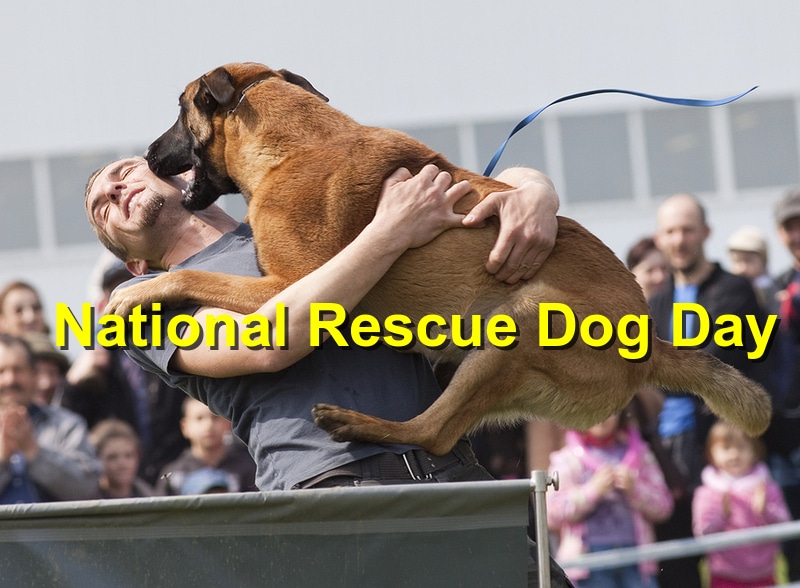National Rescue Dog Day: Emergency Pet Care for Rescued Dogs

National Rescue Dog Day, celebrated every year on May 20th, honors the countless dogs who’ve been given a second chance through rescue and adoption. These dogs often come from backgrounds of neglect, abuse, or abandonment, and though they bring incredible joy and companionship into their new homes, they may also come with specific care needs—especially in emergencies.
Providing proper emergency care for a rescued dog is essential for ensuring their safety, building trust, and giving them the stable, loving life they deserve. Whether you’re fostering, adopting, or already living with a rescue pup, understanding how to handle urgent situations can make all the difference.
Understanding the Needs of Rescue Dogs
Rescue dogs often have varied backgrounds. Some may have lived as strays, others might have been surrendered or rescued from abusive homes. Because of these different experiences, they may respond to emergencies with heightened fear or anxiety. They might also have unknown medical conditions that increase their risk in certain situations.
Before an emergency even happens, it's important to:
- Schedule a full veterinary check-up shortly after adopting a rescue dog.
- Record their medical history (if available) and vaccinations.
- Watch for behavioral signs of stress or fear that could affect how they respond in emergencies.
Building a foundation of trust, routine, and safety will help your rescue dog feel secure and more manageable in urgent situations.
1. Create a Rescue-Specific First Aid Kit
Every pet owner should have a first aid kit, but with a rescue dog, you may want to include additional items tailored to their specific sensitivities or medical issues.
Essentials to include:
- Gauze, antiseptic wipes, and bandages
- Tweezers and blunt scissors
- Digital thermometer and styptic powder
- A soft muzzle (rescue dogs may bite out of fear)
- Anxiety aids or calming sprays (vet-approved)
- A copy of your dog’s medical records
- Emergency contact numbers (vet, emergency clinic, poison control)
Label your kit clearly and keep it in an easily accessible location.
2. Learn Basic Emergency Response
Knowing how to respond when your rescue dog is injured, choking, or having a seizure can save their life.
Basic skills to learn:
- CPR for dogs: Learn chest compressions and rescue breathing techniques based on your dog’s size.
- Heimlich maneuver for choking dogs
- Wound cleaning and wrapping procedures
- Recognizing heatstroke, poisoning, or allergic reactions
Tip: Many local shelters or veterinary clinics offer pet first aid courses, which are highly recommended for new rescue dog owners.
3. Watch for Hidden Medical Issues
Some rescued dogs suffer from untreated health conditions, such as heartworms, parasites, or chronic infections. These may not show immediate symptoms but can flare up during stress or environmental changes.
Signs to monitor:
- Persistent coughing or labored breathing
- Digestive issues or refusal to eat
- Sudden lethargy or collapse
- Excessive scratching or hair loss
If you notice unusual symptoms, contact your vet immediately. Rescued dogs may be more fragile than you think—regular checkups and preventive care go a long way in avoiding emergencies.
4. Emergency Preparedness for Disasters
Natural disasters like wildfires, floods, and hurricanes often impact pets hardest when owners are unprepared. A rescued dog, already prone to anxiety, may panic during an evacuation or become difficult to handle under stress.
Tips to prepare:
- Have a go-bag ready with food, water, medications, leash, ID tags, and comfort items.
- Practice evacuation drills so your dog becomes familiar with carriers or car travel.
- Microchip your dog and keep ID tags updated in case you get separated.
5. Managing Fear-Based Reactions in Emergencies
Because many rescue dogs have experienced trauma, they may react differently than other pets during emergencies—running away, freezing, growling, or even becoming aggressive.
What helps:
- Keep your tone calm and movements slow.
- Use familiar items like blankets or toys to comfort them.
- Avoid direct eye contact during high-stress moments.
- If you need to move or restrain them, use gentle techniques and avoid force.
Over time, training and bonding can help reduce fear responses. Positive reinforcement and consistency are key to building their confidence.
6. Know When to Seek Professional Help
You can’t handle every emergency at home—and that’s okay. Part of responsible pet ownership is knowing when to turn to professionals.
Head to an emergency vet immediately if your dog:
- Has difficulty breathing or is unconscious
- Is bleeding heavily or has suffered trauma
- Ingests toxic substances
- Experiences seizures or paralysis
- Has severe vomiting, diarrhea, or pain
Keep a list of 24-hour emergency clinics in your area and know their routes in advance.
7. Celebrate Their Progress
National Rescue Dog Day is about more than just emergency awareness—it's also about honoring the journey your dog has made and the new life you’re building together.
Celebrate with:
- A special treat or toy
- A nature walk or favorite park visit
- A donation or volunteer shift at your local animal shelter
- Sharing your rescue story on social media to inspire others
Emergency preparedness isn’t just about reacting—it’s about caring deeply for your pet every single day.
Conclusion
Rescue dogs are resilient, loving, and often some of the most grateful companions you'll ever meet. But they also need special care, especially during emergencies. With the right tools, knowledge, and empathy, you can ensure that your rescue pup stays safe and supported—no matter what challenges come their way.
This National Rescue Dog Day, honor your dog’s second chance with a plan that protects them in every situation. Because every rescue dog deserves not just a home—but a future full of safety and love.
References: MillerPlaceHospital, FamilyfriendsVet
Comments
Post a Comment